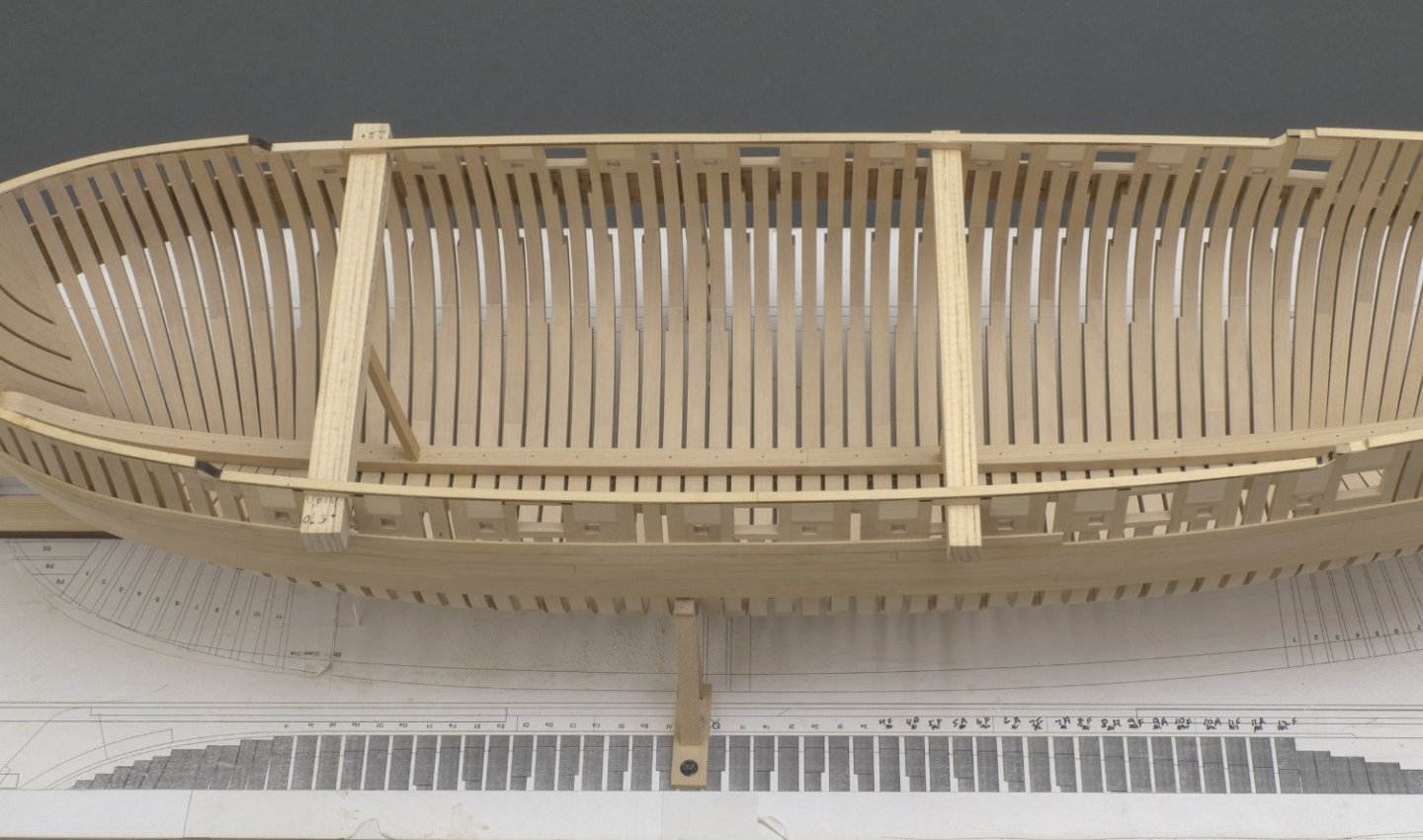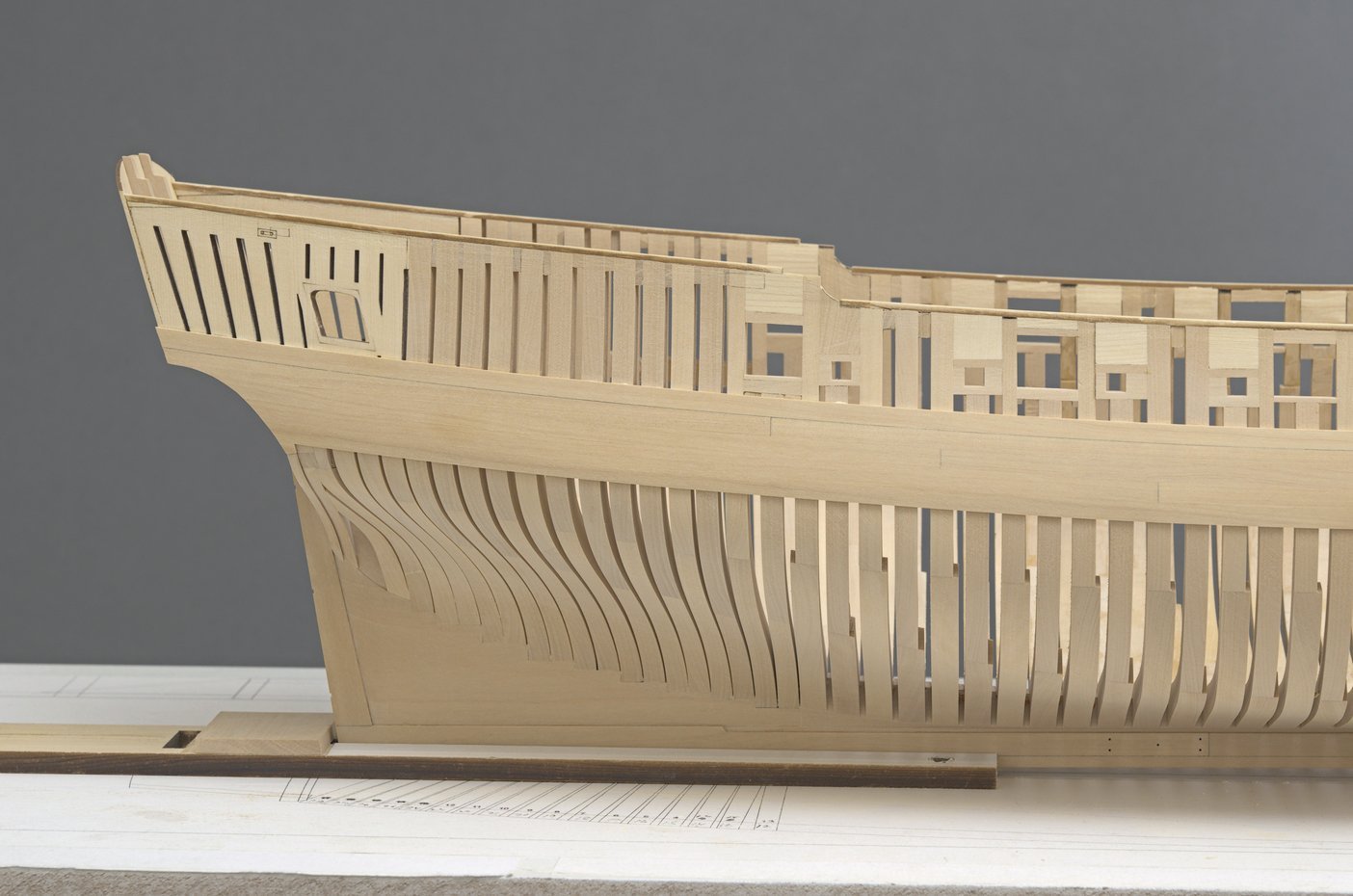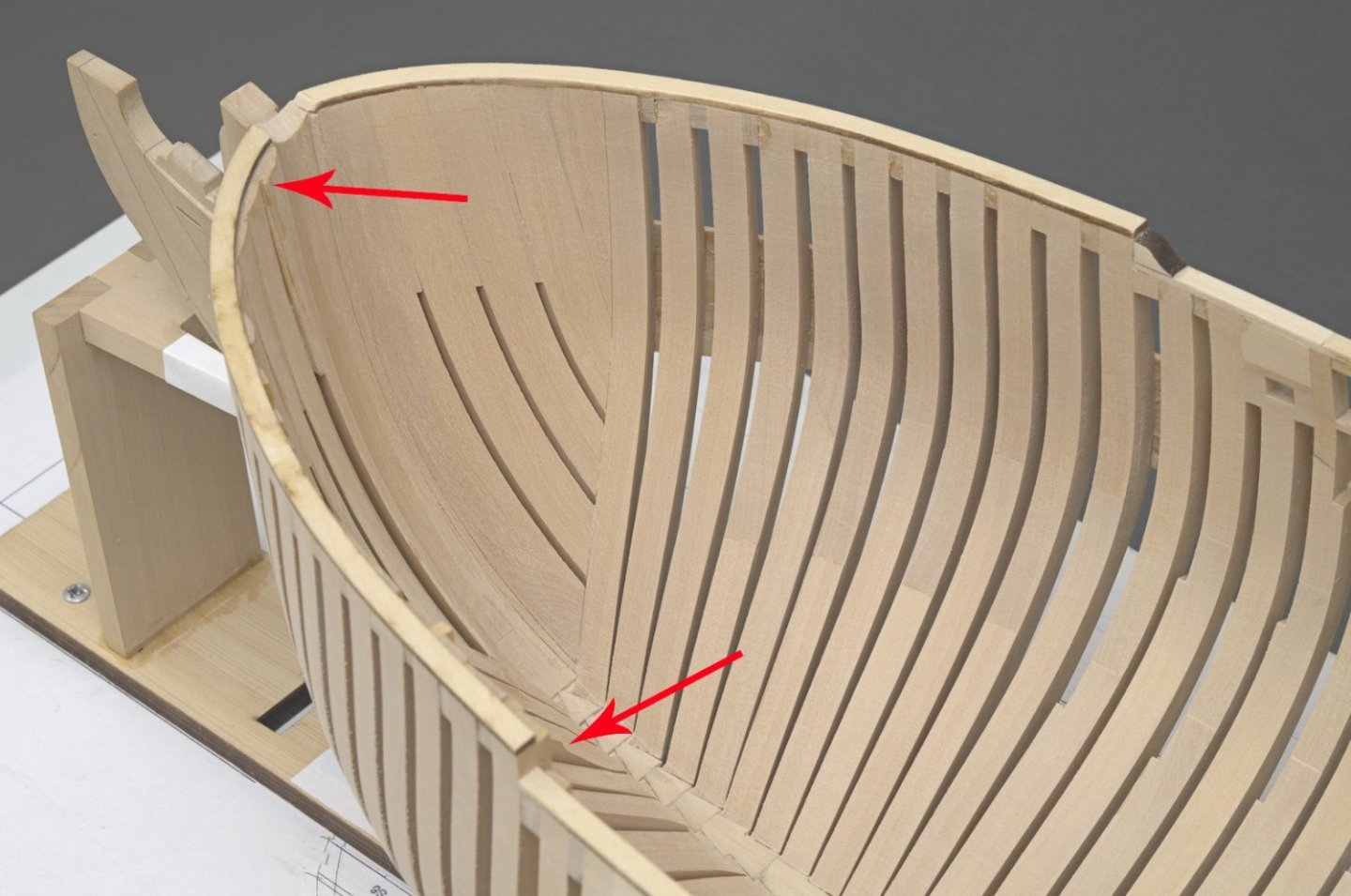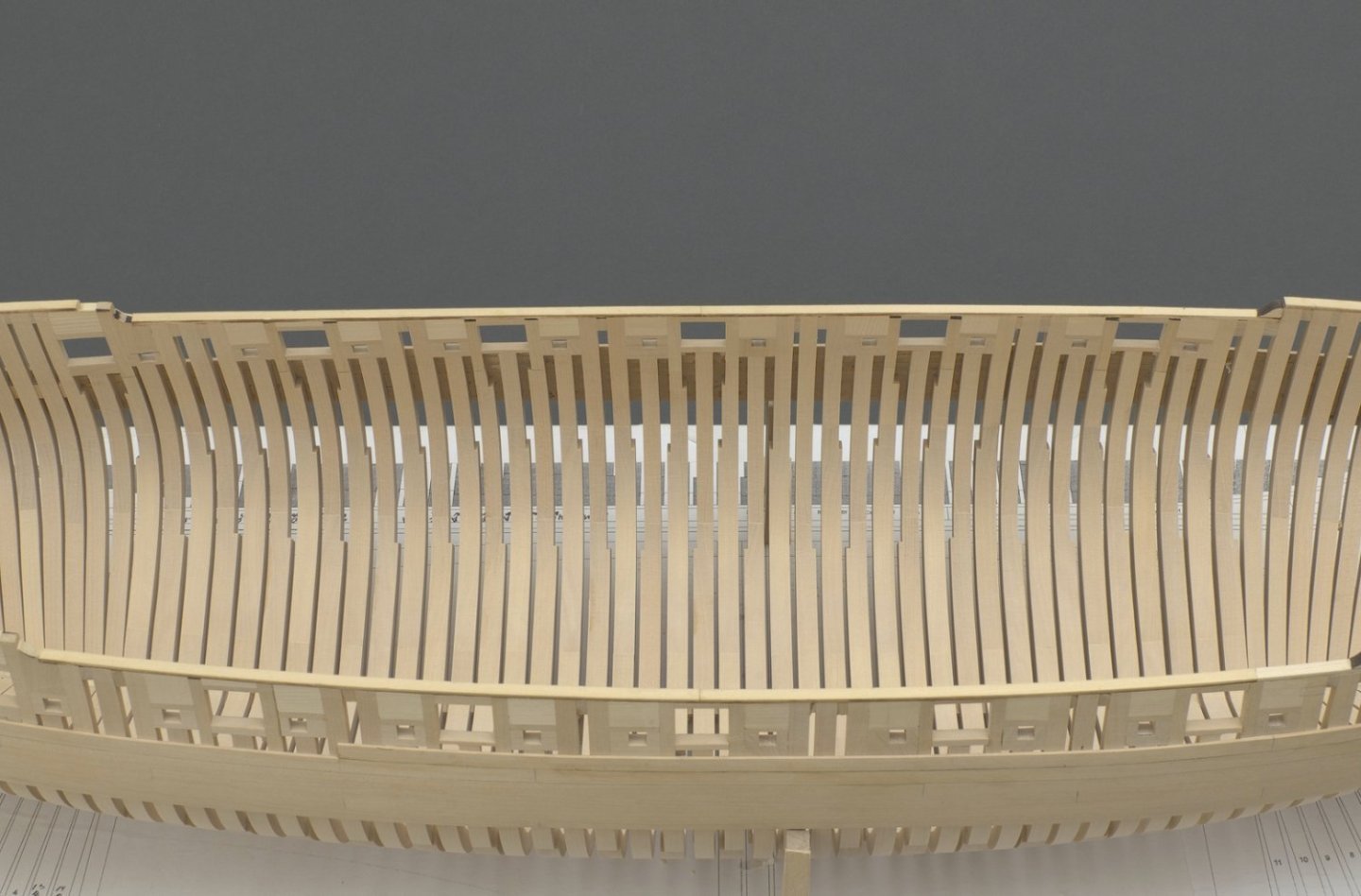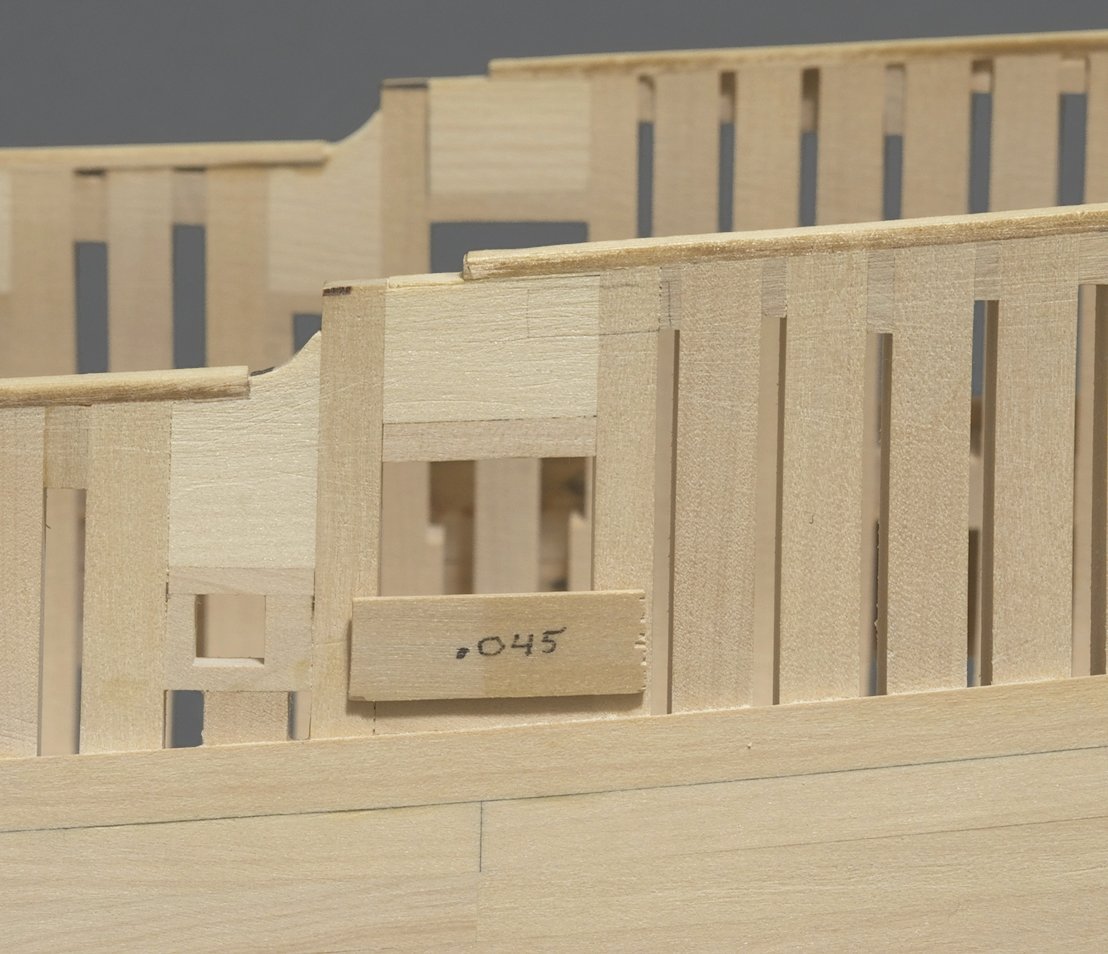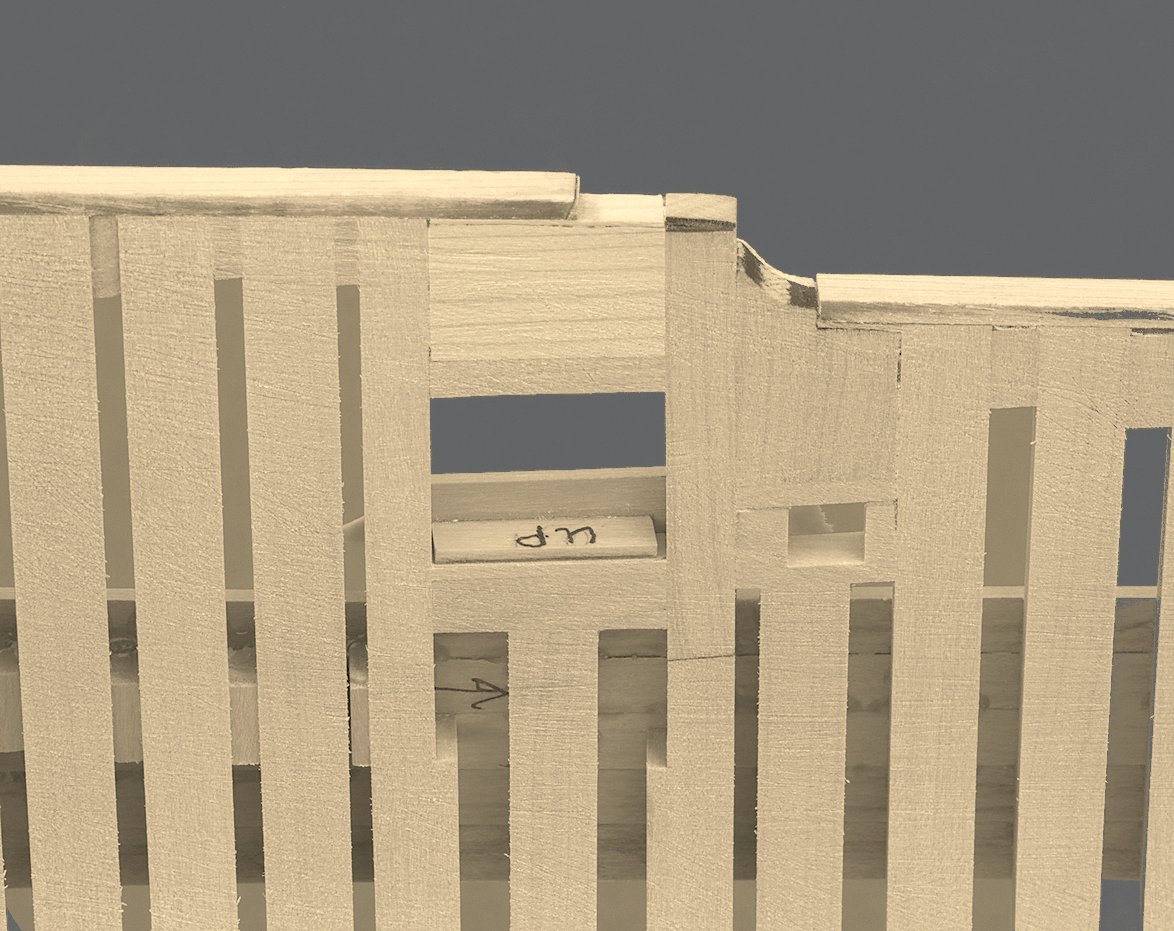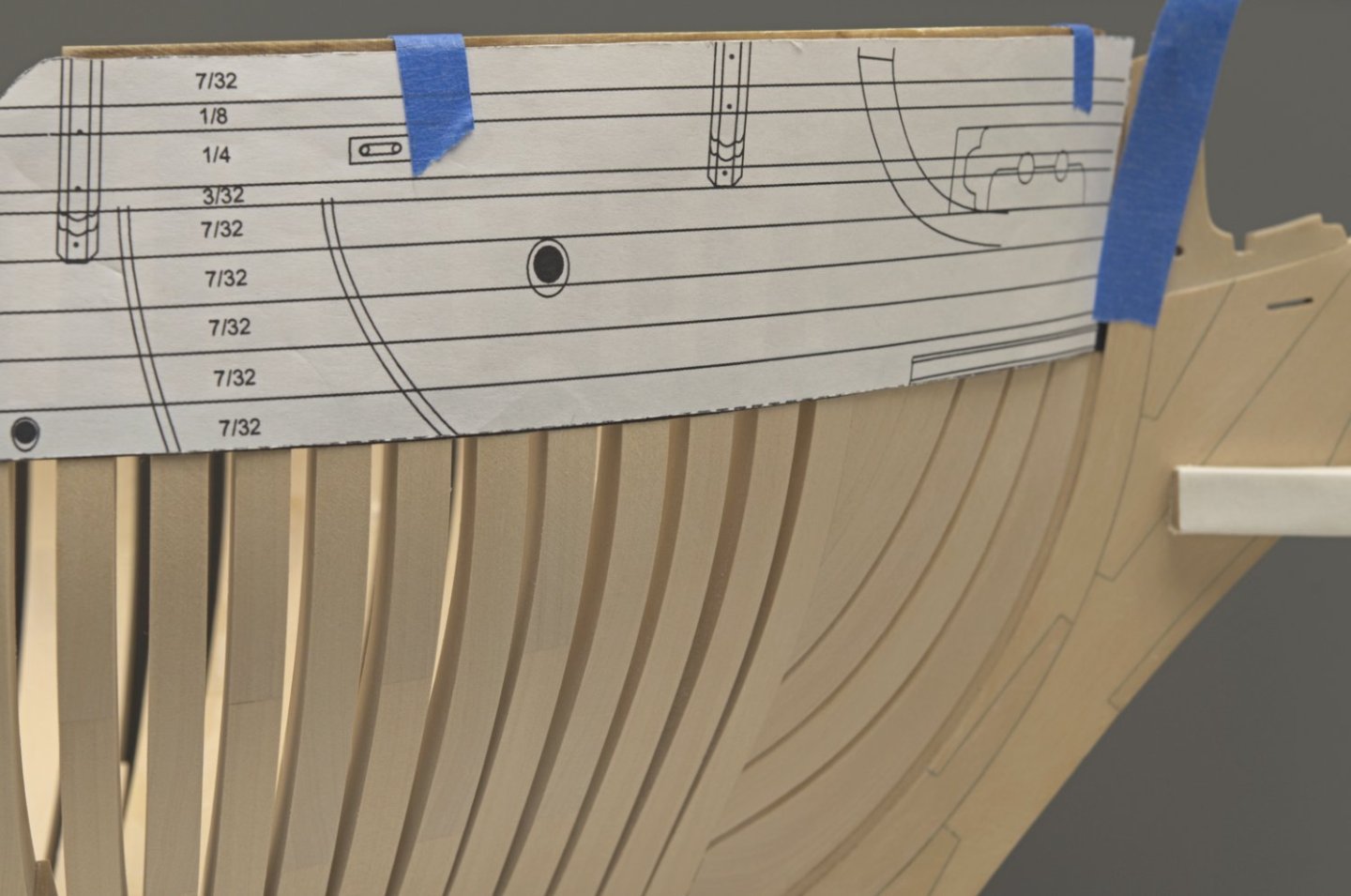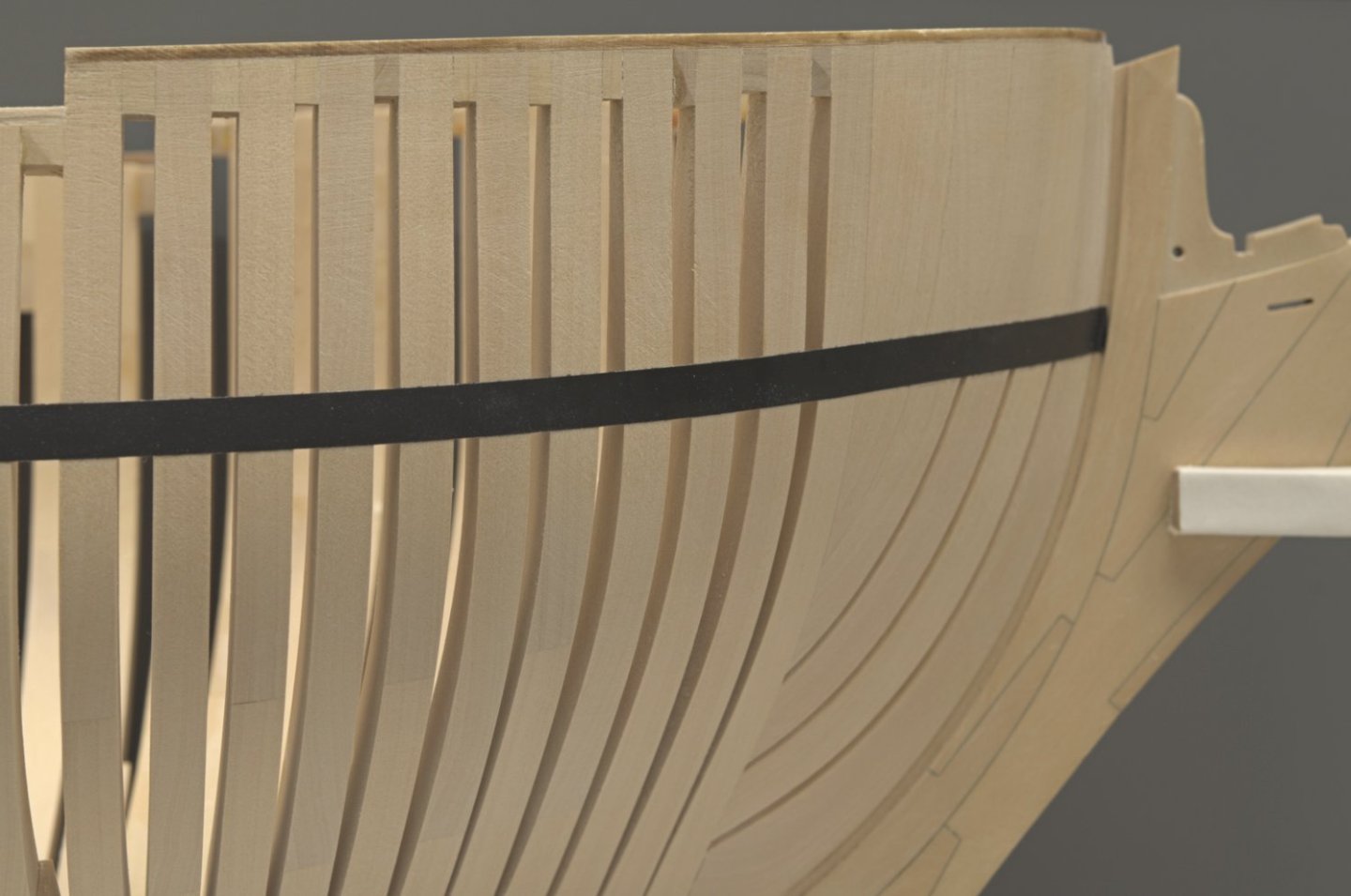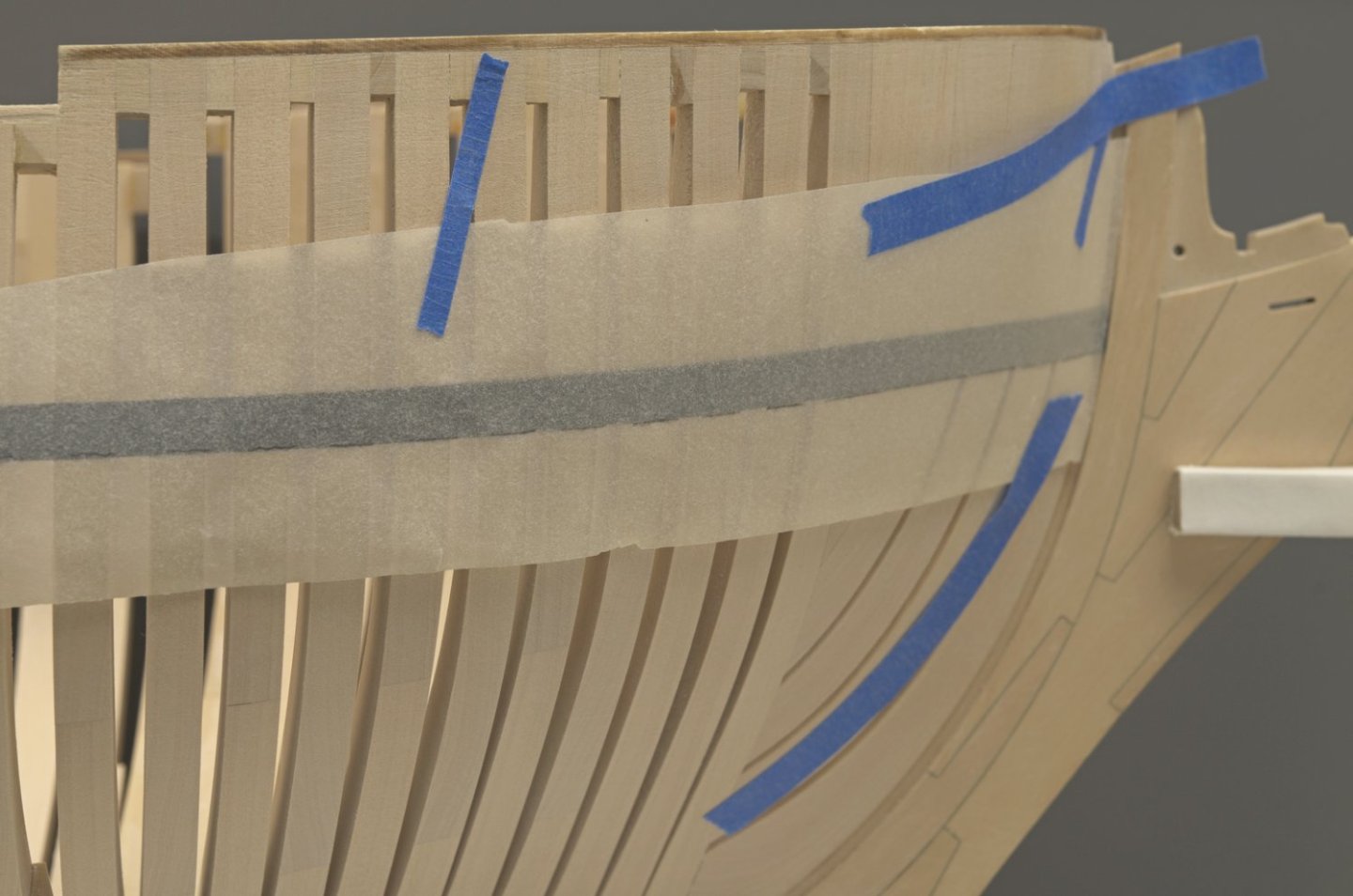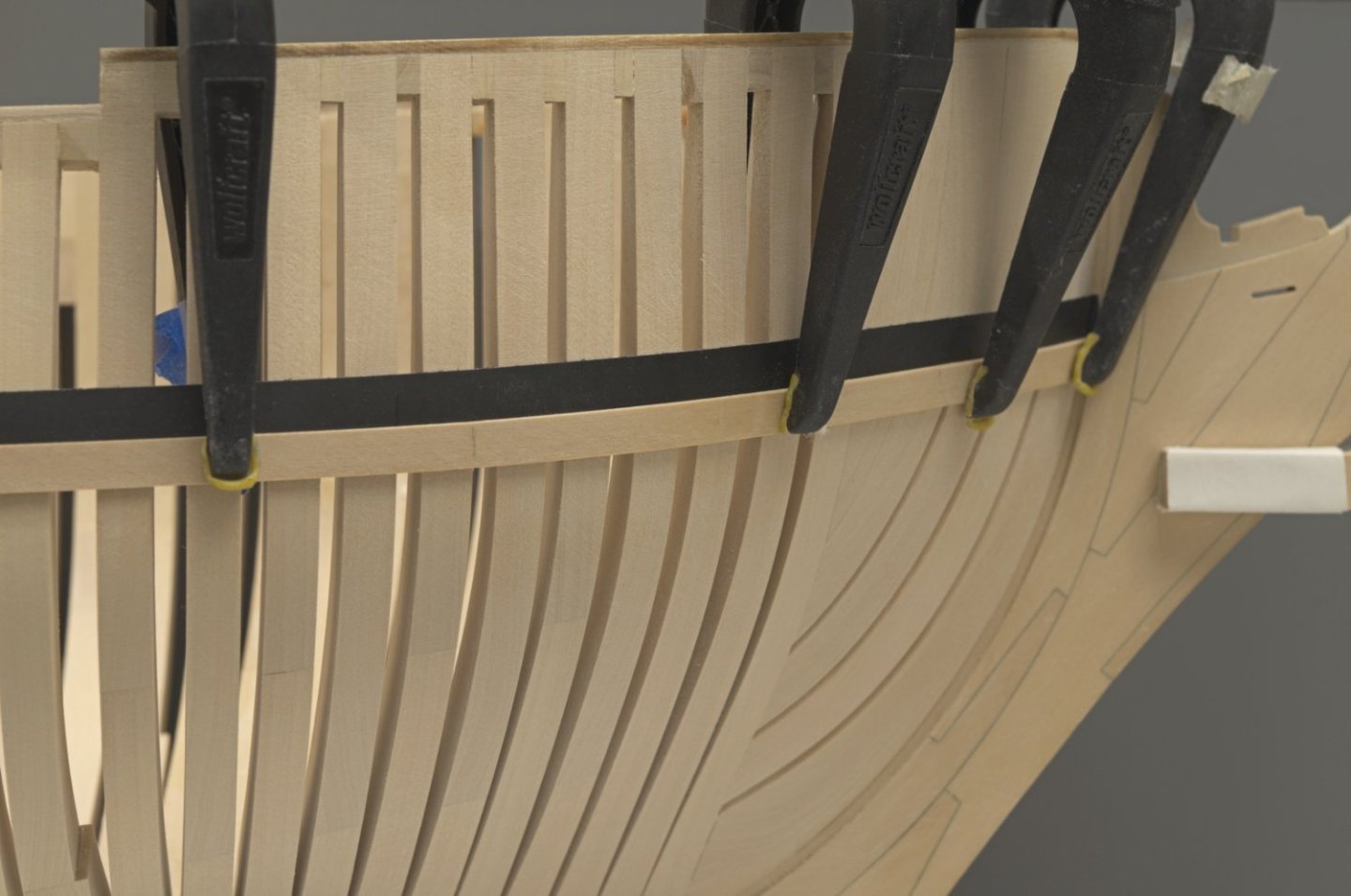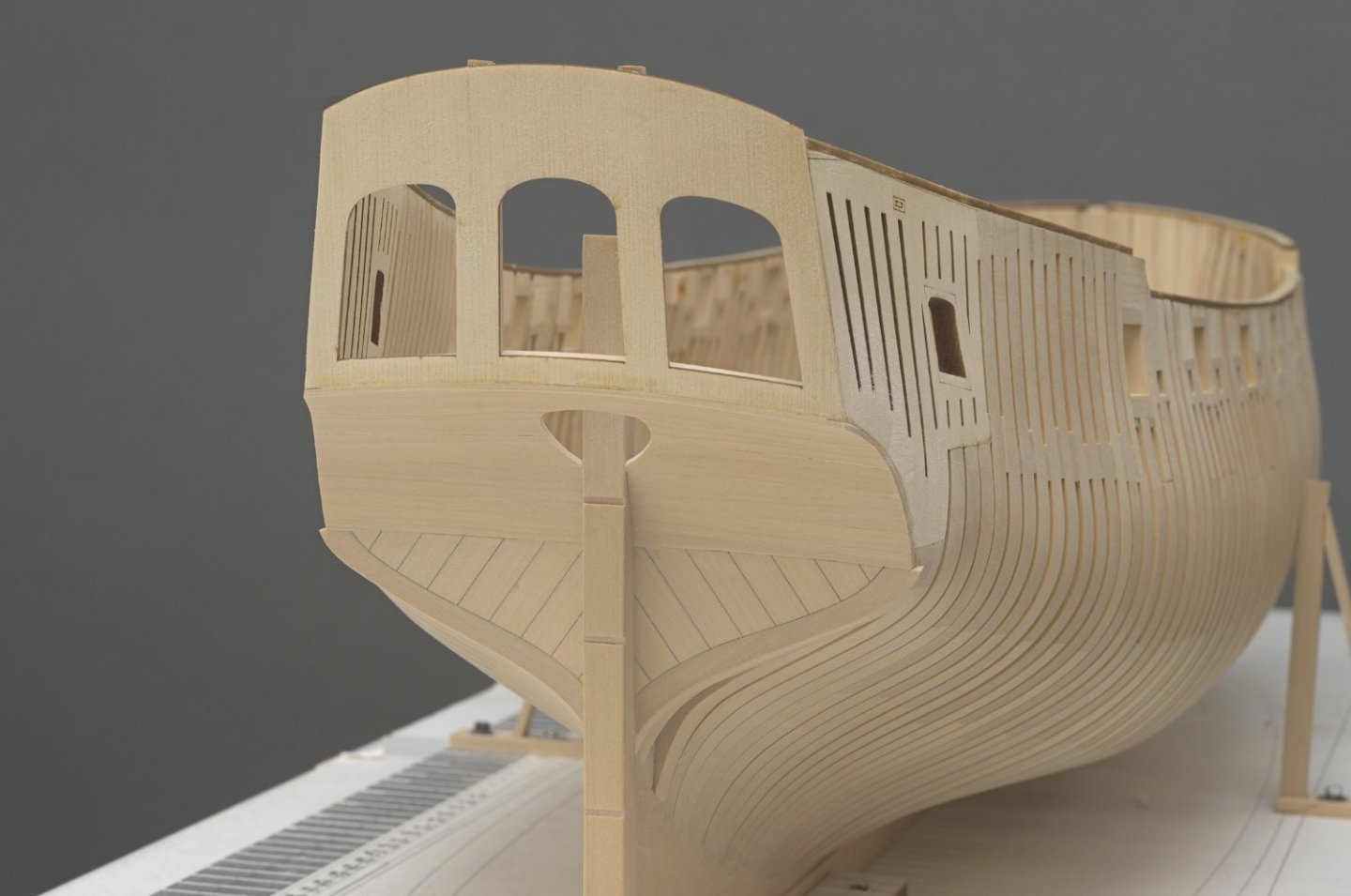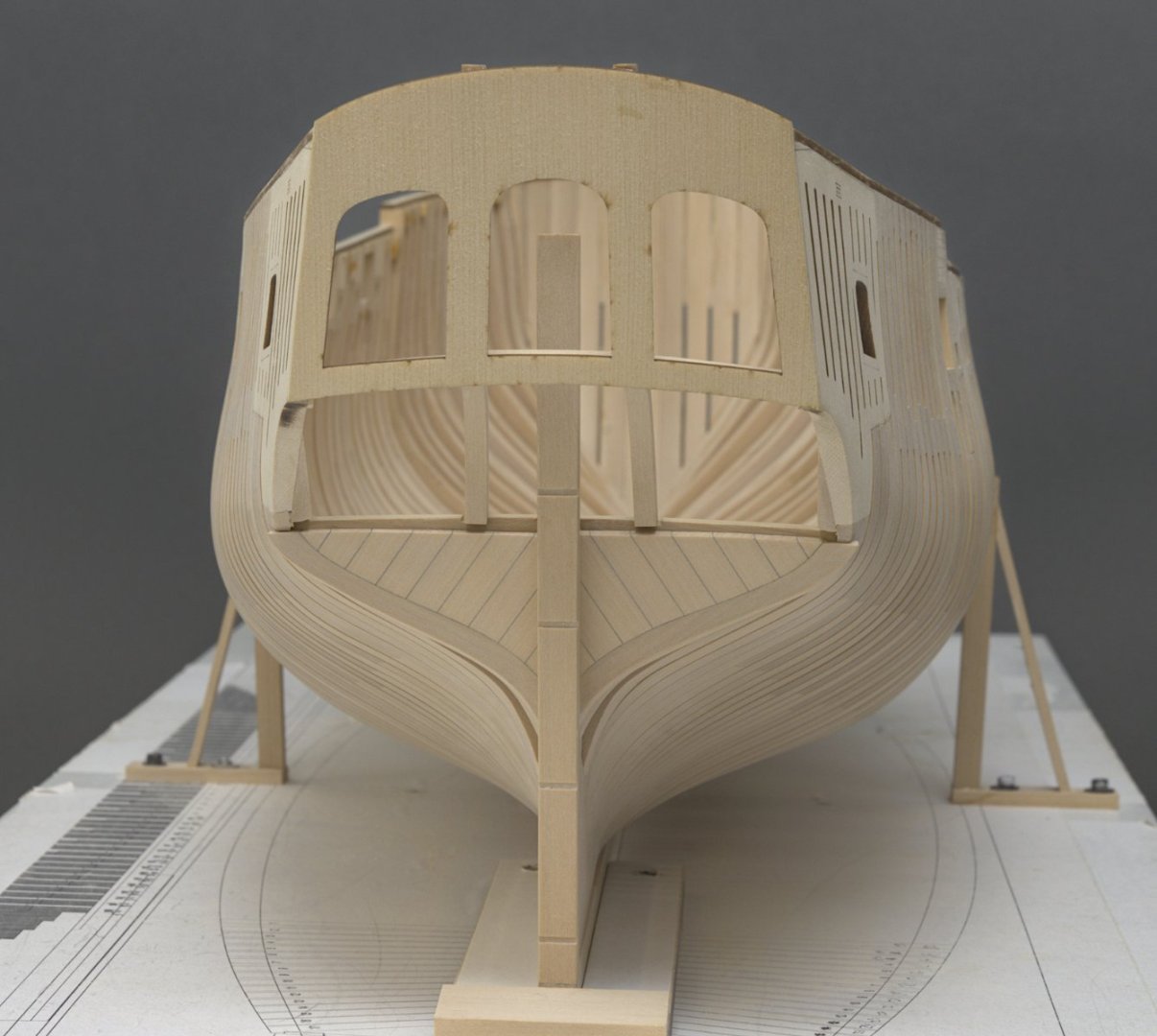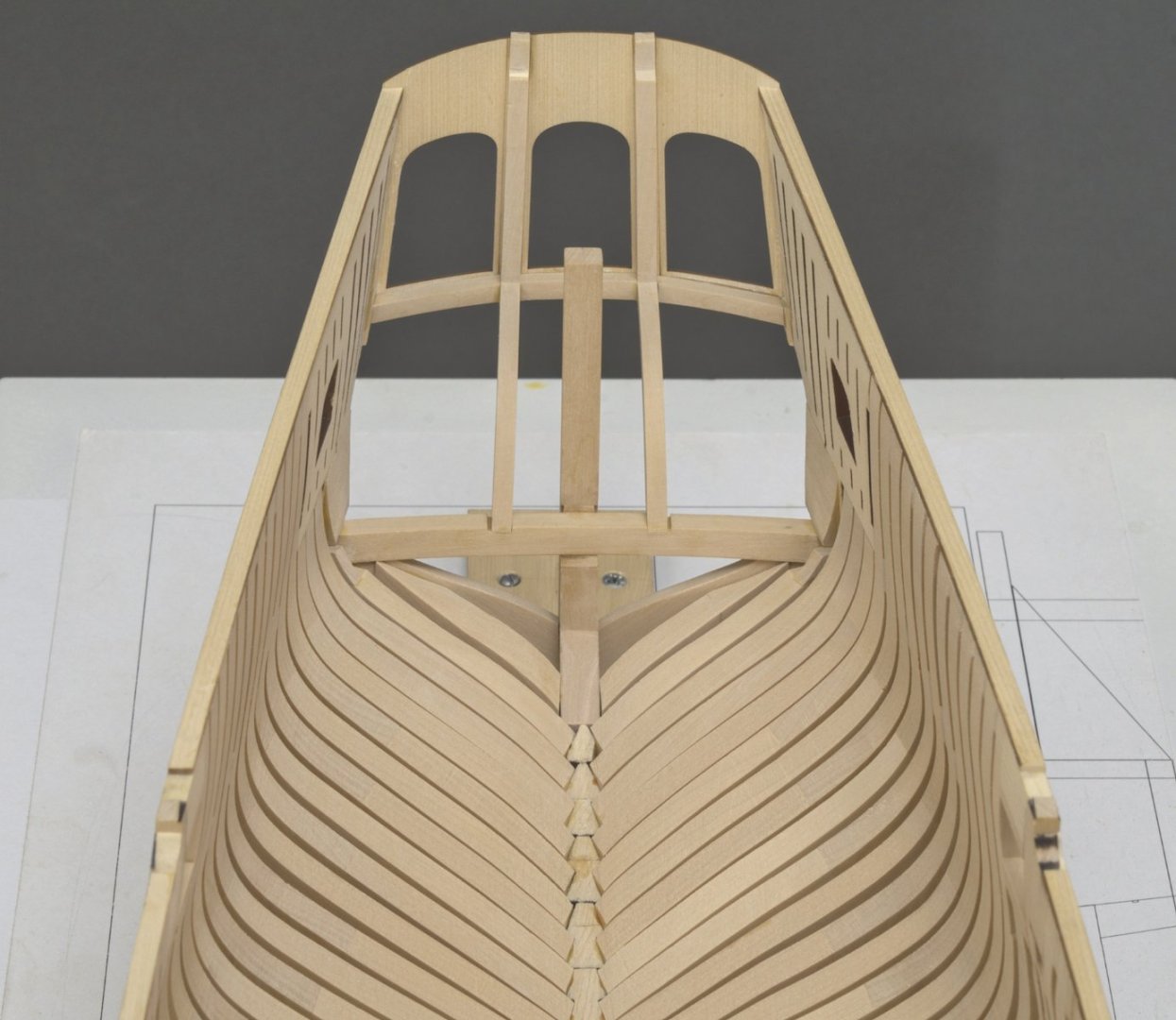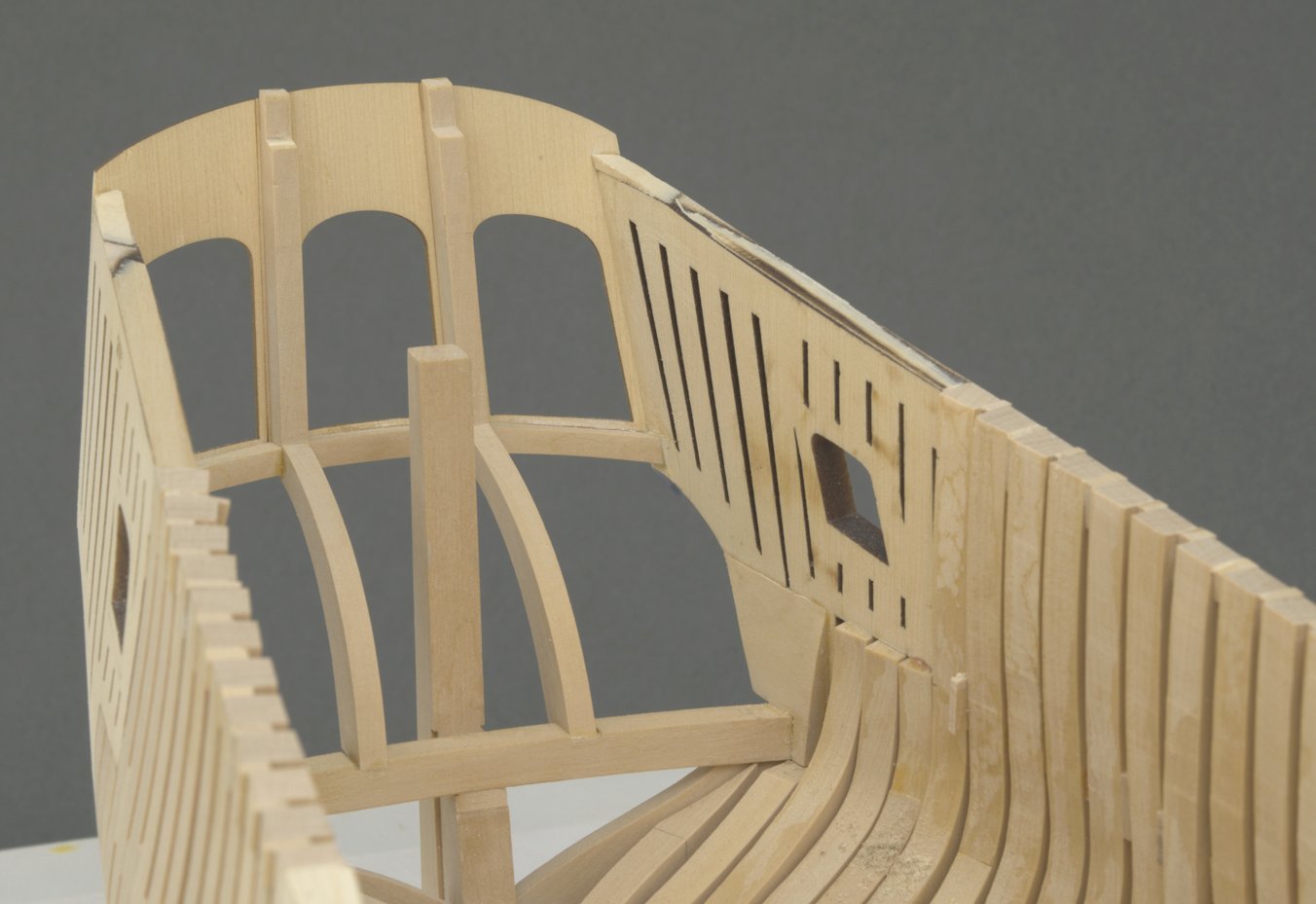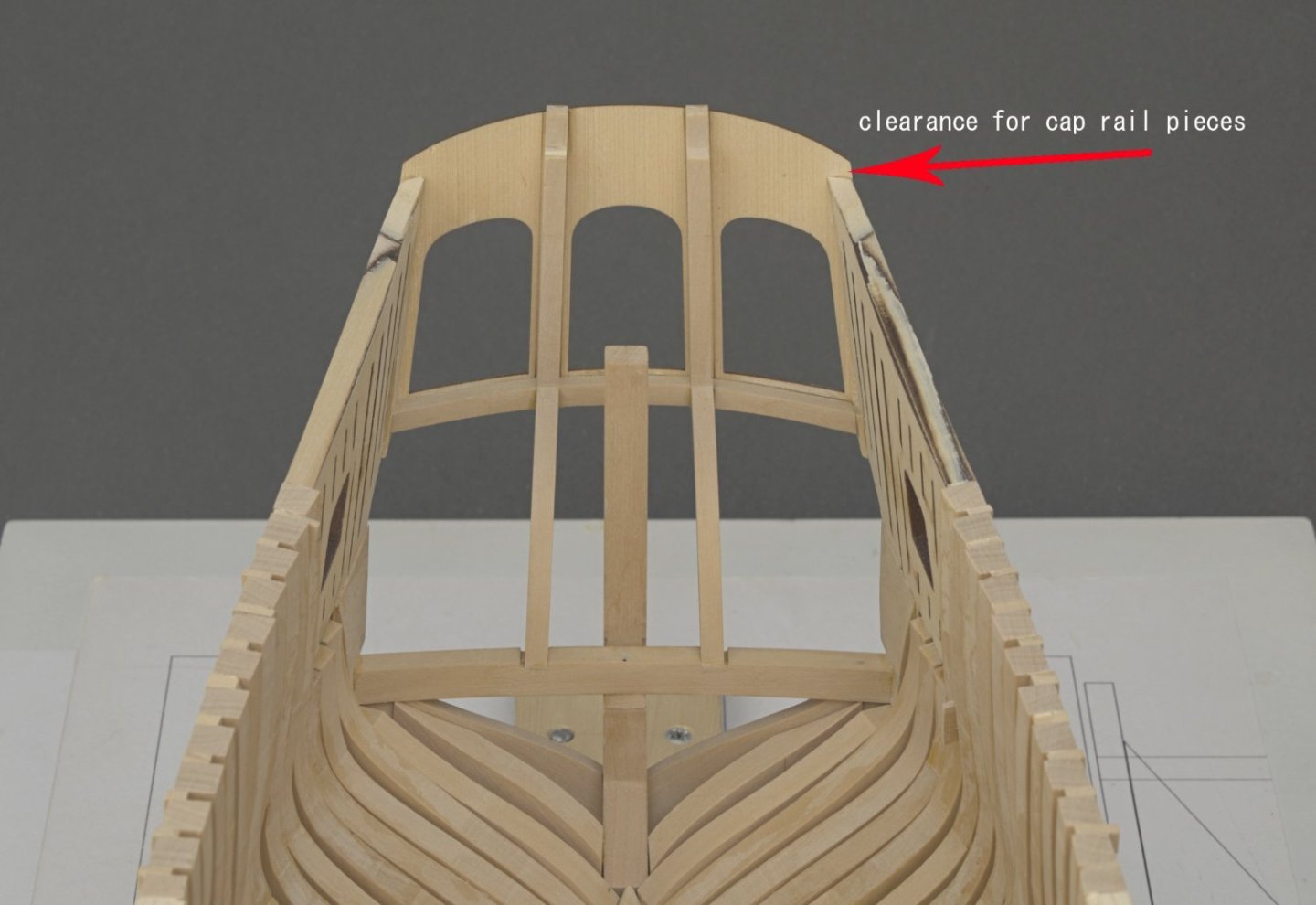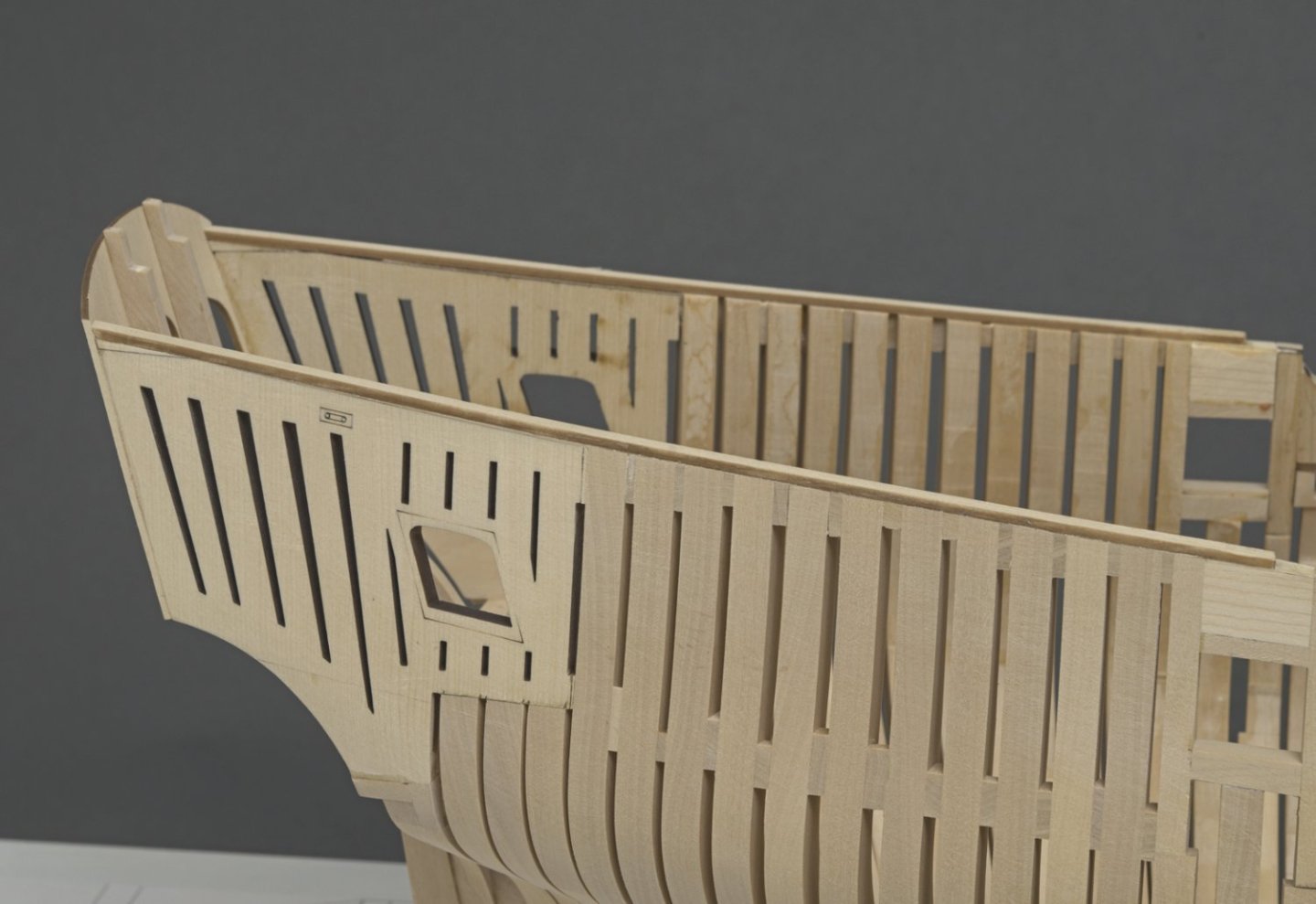-
Posts
1,197 -
Joined
-
Last visited
Content Type
Profiles
Forums
Gallery
Events
Everything posted by Stuntflyer
-
Rusty, Chuck, Thank you! Keelson I've been working on the keelson for a while. A little bit here a little bit there while fairing the frames. I went with boxwood as usual and milled scarph joints. I used 30lb (.023) black mono for the bolts. I noticed that the keelson would slip and slide a bit on the frames so I pinned it in two locations. This enabled me to center it port and starboard while saving a lot of eyeballing when gluing it down. Mike
-
Hull planking Fairing the outer hull was fairly straight forward. There is plenty of extra meat on the frames which gave me lots of wiggle room. The fairing cap edge should remain untouched, if at all possible. Easier said than done! Final sanding was done with 400 grit. Btw; I totally forgot to take some photos of the outer hull after the fairing was completed. Sorry! Once everything looked good I added the first strake (the upper wale). This was done with three planks. I did my best to eyeball the run as I added each plank and not to strictly rely on the drawn line which I made from Chuck's hull template. From there on it was just a matter of adding the two remaining wale strakes and a few more strakes above the upper wale. I also added the small filler piece which goes between the lower wale and the square tuck. With the added support given by these strakes, I decided to fair the inner hull. This ended up being more time consuming than I thought it would be. It took me several days to complete the work. Working the bow timbers, even with a Dremel or 80 grit, was slow. Once I was close I switched to a miniature curved scraper to smooth out the work. You can see just how thick the wood was in places. When fairing the area around the lower gun port sills, I found that a simple depth gauge came in handy. Including the 3/64" outer hull planking, the width of the sill should be 3/16” or maybe a hair less. I made this simple “T” shaped jig that I could place against the frames and then mark the width of the sill from inside the hull. Ready for the keelson Mike
-

Drawing center lines
Stuntflyer replied to Stuntflyer's topic in Modeling tools and Workshop Equipment
My apologies for not at first seeing Bob Cleek's post above and only those below his. My objective was to find the tool that would pencil mark the center at any width and be able to draw a center line over the length of wood. It appears that the Lee valley one, although not auto centering, would be the type I was looking for. It has the ability to mark and draw a center line even if the wood has a curve to it. -

Drawing center lines
Stuntflyer replied to Stuntflyer's topic in Modeling tools and Workshop Equipment
Gregory, I like the tool. I'm also wondering if the smallest one would work. I'll wait a bit to see if there is a smaller version out there. -

Drawing center lines
Stuntflyer replied to Stuntflyer's topic in Modeling tools and Workshop Equipment
Thanks, Kauz. I've seen that before. I was just wondering if there was a manufactured center line marker available online. -
Rather than using a compass, is there a small tool which can be purchased online to draw a center line down the length on 1/4"-1/2" wood strip? Thanks, Mike
-
Hull planking (prep) One of the things I've been wanting to do was to see whether or not I could get away without having to spile the hull planks from 3/64" sheet. I was hoping that I could just edge bend boxwood planks to match a spiled shape. With that in mind I ran a test to see if indeed it could be done. The sequence is a little off since I thought of taking the photos after some of the steps were completed. I retraced the steps as best I could. For better viewing I have focused in on a smaller area of the hull. The first thing I did was to attach the hull template to my hull. I ran some 1/4" striping tape along the lower edge of the template and then back masked the upper edge of the tape. After that the original layer of tape was removed. You can see a bit of the back masking at the stem. I could have just drawn a line along the bottom of the template instead of using tape. Being a test of only one plank, I didn't want to do that. Hey, that's just me complicating things. Here is the back masking (original taping removed) where the lower edge will line up with the upper edge of the plank. I traced the lower edge of the tape (the shape for the upper edge of the plank). This gives me the shape needed for spiling or hopefully just some edge bending. You should be able to see the pencil marks across each frame. The resulting shape resembles a gentle "S" curve. Something like this. I was able to edge bend the boxwood to match the spiled shape without any difficulty. Clamping the test plank to the hull was done without having to do any twisting or bending. Mission accomplished! Mike
-
Thanks, Chuck! I think it's going to be a while before I'm anywhere near where you're at. I still haven't finished up fairing the hull. Now that the fairing cap is on I will work on getting that done. After that I want to start painting the ports. Are there any other options that would work nicely with the friezes other than crimson red?
-
Lower counter I gave a lot of thought towards doing the lower counter in AYC. Unfortunately, I didn't have any sheets on the shelf. I know it all seems pretty straight forward, just a simple planking job. That wasn't the case at least for me. It would have been easier to do this in AYC being that the wood is much more flexible than boxwood when doing this kind of work. After the planks were in I faired a nice rounding into the wood with some miniature scrapers. https://www.amazon.com/Lynx-Mini-Scraper-Set-4pc/dp/B00ICISC2U There were a few areas where the cedar quarter panel was slightly over faired (rounded off) on the lower edge which I compensated for when I faired the outer edge of the lower counter. Mike
-
Thanks guys! Your kind words are very much appreciated, as always. I'm looking forward to getting those first planks on the ship. Something different! Chuck, thanks for the heads up. I added the first counter planks and there was no issue getting the lower edge of counter flush with the square tuck Mike
-
Square tuck I wanted to give this a try at least once before making use of the laser cut versions. #1. I copied the angle from the laser cut piece onto the joined strips. #2. The frame was made and set parallel with the angled line. #3. The curves were done with the spindle sander and disc sander along with a bit of hand work. #4. Almost ready to place on the ship. I Still needed to taper the frame. The most difficult part was trying to get symmetry between the two sides. It's not perfect, but certainly close enough. I was kicking myself when I noticed that the top of the port side square tuck is 1/64" lower at the stern post compared to the other one. Of course this won't be seen once the moulding is on. I left the outer area of the frames without any tapering. There is a tiny filler plank that goes between the tuck and the first strake. I will wait until that's on the ship, so I can sand that area all at the same time. Anyway only one shot at it for this result. Mike
-
As you know, Chuck faired the hull with the top jigs in place. After supporting the hull with some planking, he was able to remove the jigs and add the fairing caps for both shape and support. Through hands on experience he knows that this approach will work out nicely. I wasn't so sure that it would work out the same for me. I was concerned that after removing the top timber jigs, I would find myself having to fair the hull a lot more. This would be quite difficult with the planking already on the hull. With that in mind, I decided to take a different approach. I added a chock between each frame where they would be covered by planking. Adding the chocks meant that I could pull the laser cut top timber jigs (before doing any planking) while maintaining support for the frames. After adding the fairing caps, I could fair the hull more accurately at the shear. Generally this turned out to be true at least for me. There were some areas at the shear that needed more work, but an inch or so below the shear the fairing work was good. Yes, a few hours of extra work that turned out well in the end. Notice that there is still enough room for the .025" cap rail to sit just below the top of the transom. There was an enormous amount of work needed to fair these aft cants. It took me the better part of three days. Remember this is boxwood, not AYC. Anyway that's done now.😁 Mike
-
Window sills I will admit that these were quite tricky to make. Different angles everywhere and some trial and error was needed in order to get them just right. I probably had 3 or 4 throwaways before getting the ones you see here. Stern frames In order to make these, I sandwiched two roughly cut frames together with some Elmer's School Glue and then adhered the plan drawing for final shaping. This was easy enough to do with the help of the spindle sander, disk sander and scroll saw. Transom On top of the shear there will be a 5/32" fairing cap and a 1/4" cap rail that sits on top of that. The two pieces will add a total of about 3/32" more height to the top of the shear. I wouldn't want the cap rail to protrude above the top edge of the transom. With that in mind, I decided to fair the quarter deck shear before adding the transom. This way I could check the clearance before adding the transom. It was really just a matter of getting that small triangular piece taken down to the right height while fairing the shear. I added the 5/32" fairing cap for the quarter deck and faired the outer hull using the cap as a guide. Mike
About us
Modelshipworld - Advancing Ship Modeling through Research
SSL Secured
Your security is important for us so this Website is SSL-Secured
NRG Mailing Address
Nautical Research Guild
237 South Lincoln Street
Westmont IL, 60559-1917
Model Ship World ® and the MSW logo are Registered Trademarks, and belong to the Nautical Research Guild (United States Patent and Trademark Office: No. 6,929,264 & No. 6,929,274, registered Dec. 20, 2022)
Helpful Links
About the NRG
If you enjoy building ship models that are historically accurate as well as beautiful, then The Nautical Research Guild (NRG) is just right for you.
The Guild is a non-profit educational organization whose mission is to “Advance Ship Modeling Through Research”. We provide support to our members in their efforts to raise the quality of their model ships.
The Nautical Research Guild has published our world-renowned quarterly magazine, The Nautical Research Journal, since 1955. The pages of the Journal are full of articles by accomplished ship modelers who show you how they create those exquisite details on their models, and by maritime historians who show you the correct details to build. The Journal is available in both print and digital editions. Go to the NRG web site (www.thenrg.org) to download a complimentary digital copy of the Journal. The NRG also publishes plan sets, books and compilations of back issues of the Journal and the former Ships in Scale and Model Ship Builder magazines.



